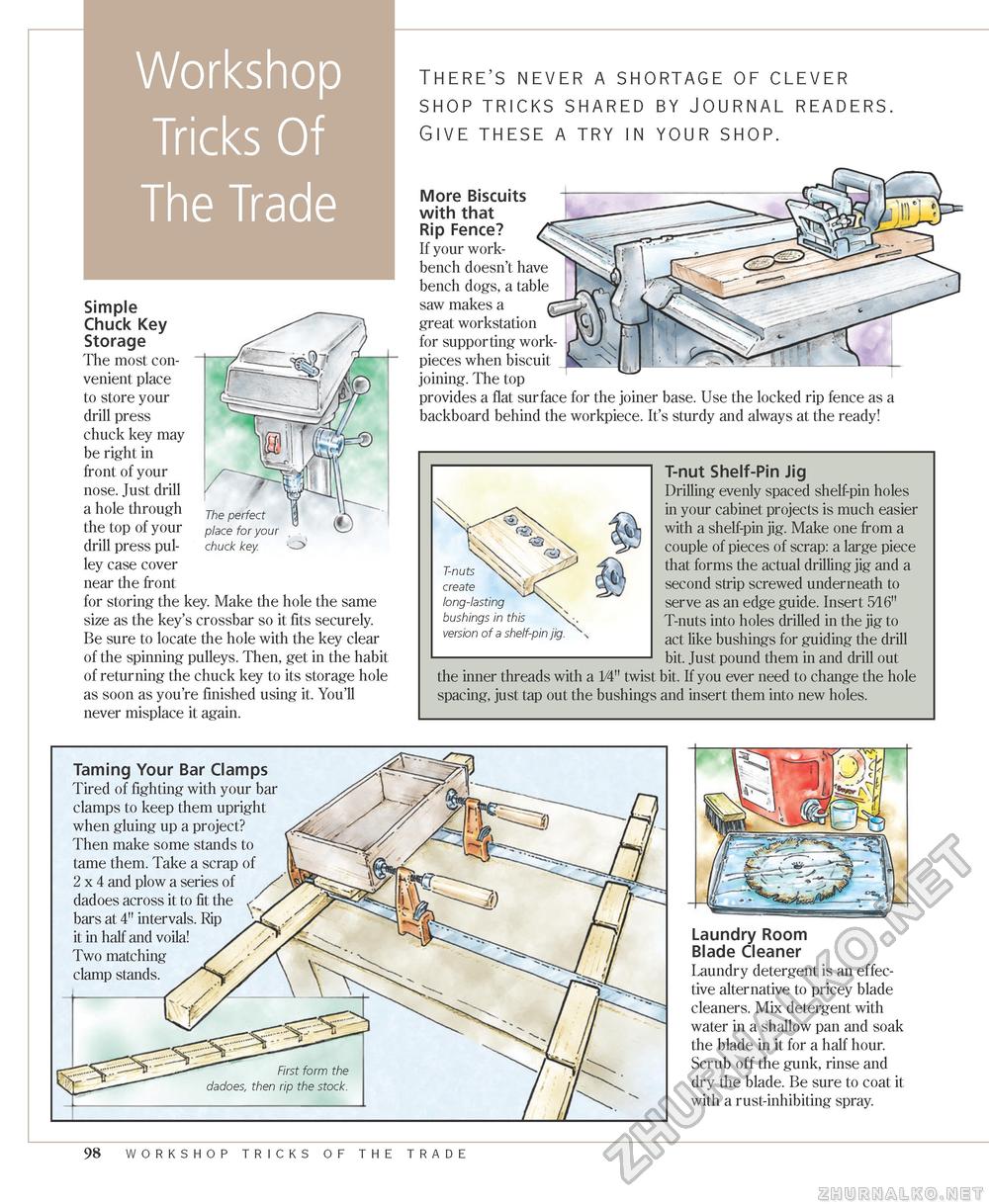Woodworker's Journal Summer-2008, страница 98
Workshop Tricks Of The TradeSimple Chuck Key Storage The most convenient place to store your drill press chuck key may be right in front of your nose. Just drill a hole through the top of your drill press pulley case cover near the front for storing the key. Make the hole the same size as the key's crossbar so it fits securely. Be sure to locate the hole with the key clear of the spinning pulleys. Then, get in the habit of returning the chuck key to its storage hole as soon as you're finished using it. You'll never misplace it again. The perfect place for your chuck key. There's never a shortage of clever shop tricks shared by journal readers. Give these a try in your shop. More Biscuits with that Rip Fence? If your workbench doesn't have bench dogs, a table saw makes a great workstation for supporting work-pieces when biscuit joining. The top provides a flat surface for the joiner base. Use the locked rip fence as a backboard behind the workpiece. It's sturdy and always at the ready! T-nut Shelf-Pin Jig Drilling evenly spaced shelf-pin holes in your cabinet projects is much easier with a shelf-pin jig. Make one from a couple of pieces of scrap: a large piece that forms the actual drilling jig and a second strip screwed underneath to serve as an edge guide. Insert 516" T-nuts into holes drilled in the jig to act like bushings for guiding the drill bit. Just pound them in and drill out the inner threads with a 1/4" twist bit. If you ever need to change the hole spacing, just tap out the bushings and insert them into new holes. T-nuts create long-lasting bushings in this version of a shelf-pin jig. Laundry Room Blade Cleaner Laundry detergent is an effective alternative to pricey blade cleaners. Mix detergent with water in a shallow pan and soak the blade in it for a half hour. Scrub off the gunk, rinse and dry the blade. Be sure to coat it with a rust-inhibiting spray. 98 workshop tricks of the trade |







